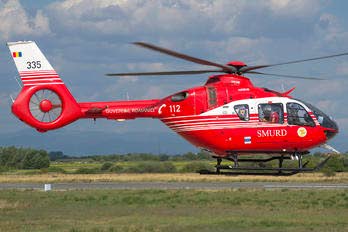Revamping police Air Support Unit

Crime-fighting has now reached a threshold in most crime hotspots where "bicycle and baton" policing has become ineffective, requiring law enforcement agencies to add air support units to their crime-fighting arsenal.
In most countries, police air support units use fixed-wing aircraft and helicopters for high-speed pursuits, surveillance, traffic control, search-and-rescue and critical aerial support for ground personnel during law-enforcement operations. Thanks to their high degree of manoeuvrability and vertical takeoff/landing (VTOL) capabilities, helicopters are used in several countries for police operations.
The TT Police Service (TTPS) Air Support Unit previously operated two BO 105 helicopters.
However, in January 2011, then Police Commissioner Dyane Gibbs announced that the air fleet of the Special Anti-Crime Unit of TT (SAUTT) – comprising four helicopters and an airship, also known as the blimp – had been absorbed into the police service.
In April 2011, the Air Guard (TTAG) began to take delivery of the four AgustaWestland AW139 helicopters to complement the three offshore patrol vessels (OPVs) that were being acquired for the Coast Guard. The helicopters were capable of landing and refuelling onboard the OPVs.
The previous administration provided inadequate capital funding to meet the contractual obligations with AgustaWestland for spare support, well-equipped hangars, office space and training local pilots and engineers.
There was very little transfer of technology and institutional knowledge to locals during the five years of the initial support contract with AgustaWestland.
Therefore, locals were not trained and qualified to fully manage the AW139 operations and maintenance when the AgustaWestland support contract came to an end in 2016.
A proposal was submitted to Cabinet to engage another provider for AW139 operations and maintenance support services.
But on June 29, 2017, the Prime Minister announced that Cabinet had decided that TT could not afford to spend $200 million a year to maintain four helicopters. This resulted in the grounding of the helicopters, which had been acquired for $2.2 billion.
The restoration of all four AW139 helicopters to qualify for airworthiness certificates requires expensive, outstanding and mandatory modifications, as well as inspections of the airframe, engines and rotors.
In May 2019, responding to media questions about the Air Guard, then Minister of National Security Stuart Young announced that an integrated air unit is expected to be introduced in the country’s national-security apparatus soon.
Young said, "I intend to go to Cabinet very shortly to ask for the approval of helicopters for an air unit that will be manned predominantly by the Air Guard."
He added that the assets would be available to various arms of national security.
"If the Defence Force needs to use it, they can, if police need to use the assets, they can use it, if other operations need to use it, they can use it.
"The assets will be based in Cumuto: that is the thinking right now.
"But it will be assets that all three arms of national security can tap into. That will be the best value for money for TT."
The air assets of the TTPS Air Support Unit, except for the drones, are ageing and in urgent need of replacement.

Air assets are very expensive to acquire, operate and maintain. Therefore, they cannot be acquired haphazardly.
The mission of the TTPS Air Support Unit must be clearly defined by the appropriate authority as it relates to national-security objectives, priorities and user requirements.
Thereafter, air assets which clearly suit the mission and represent the best value for money can be acquired according to due process.
Several companies manufacture highly manoeuvrable twin-engine light utility helicopters capable of flight under instrument flight rules (IFR) in all weather conditions. The helicopters are widely used by police air support units throughout the world.
The helicopters can be equipped with state-of-the-art video and voice equipment for real-time communications with TTPS command centre, divisional operations centres, National Operations Task Force and ground vehicles.
Police helicopters are equipped with "night sunlighting" –very powerful searchlights that can light up the ground like daylight. Night sunlighting has proven a major crime deterrent during aerial policing at night time.
Air assets do not always follow the rule "one size fits all," as an air asset that may be best suited for maritime surveillance, border protection and air interdiction may not be suitable for inland police operations.
Therefore, the proposed integrated air unit may not be the best option for the TTPS. Besides, during police operations where time is of the essence, there cannot be conflicts among the national security agencies over the operational jurisdiction of an integrated air unit.
National security helicopters must have round-the-clock capability to rapidly deploy law-enforcement officers to a crime scene. For this reason, the TTPS should have a dedicated and well-equipped air support unit under the command and control of the Commissioner of Police.
As the helicopters will be involved in law-enforcement operations, their operations will be deemed "state operations," and not subject to civil aviation regulations.
Article 3 of the Chicago Convention, of which TT is a signatory, states: “This convention shall be applicable to only to civil aircraft, and shall not be applicable to state aircraft. Aircraft used in military, customs and police services shall be deemed to be state aircraft.”
The helicopters can be operated under a different regulatory arrangement that can achieve civil equivalency in safety standards at a significantly reduced cost.
Very costly mistakes were made in the past, as was the case with the AgustaWestland AW139 helicopters.
TT taxpayers cannot afford for these mistakes to be repeated.


Comments
"Revamping police Air Support Unit"